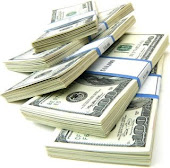Trading in fantasy sports isn’t always just about the players involved and their respective values. Sometimes there are intangibles that don’t get accounted for that can swing a seemingly unfair deal into one that get’s done. Look across the transactions count in your league, it’s likely you’ll notice a clear delineation between those of us who hammer the waiver wire daily to grab the latest hot player in hopes he stays hot, and those who stick with what they’ve got and ride out a consistent squad. Obviously I’m more the former type of player, and I’ll imagine you are too, and at this point in the season it’s important to recognize that this gives us a trading chip for bartering with the owners who are not active: depth.
Depth means I’ve got a bench full of players who are viable starters, while you’ve got starters who shouldn’t even be on a team. In my league we roll with the normal 10 guys starting, and then another 3 on the bench. My goal is to make sure that I always have at least one guy on that bench that I am perfectly comfortable dropping at a moments notice to grab someone else. If that isn’t the case, then I’ve got too much depth on my team. Even if I were playing in a H2H format, I’d still be looking to deal off depth at every turn because there are always going to be good looks on the FA wire. If I have to gut check, and say to myself ‘I really don’t want to drop so and so, then I’m going to miss out on grabbing a guy like Marcus Thornton or Carlos Delfino.
I can also understand where the inactive manager is coming from. In his view, you are wasting your time because for every three guys you pick up, you’re lucky if one of them turns out good. He in turn is afraid that the one guy he’s going to drop (especially early on) is going to turn it around the minute he drops the player. It’s a stupid strategy, but it’s at least understandable.
Going into my Lebron James deal I recognized that Carlos Delfino was proving himself to be a viable starter. He was being wasted on my bench and I was keenly aware that he had more value to me than I was going to get from him via trade. That’s an important concept to recognize, he has more value to me – because I am watching him play, seeing his lines – than he is worth via trade – because his rank hasn’t caught up, he’s an unknown, people don’t want to take that chance. Thus it made sense to move two ‘name value’ players, grab a stud in return, and shift Delfino to my starting lineup. In turn the guy I was targeting, while harboring Lebron James, had a very thin lineup the rest of the way. He was low in transactions and I knew he had to be fed up by now with a couple of his starters. No matter how good LBJ is it kills this owner to see 2 or 3 of his starters put up terrible lines night in and night out.
My deal with him was about more than just values. My deal with him was about depth. I was in effect saying to him ‘hey, do yourself a favor, take these two guys for your one, the values are close, but the ability to kick out that one terrible starter you got swings the deal to a place you want it to be’. He was all too happy to accept. Depth can be a very powerful force in fantasy sports and the key secret that we know and they don’t realize is that there’s still value sitting out on the FA wire. I’ll continue to make depth offers (currently offering Jason Richardson and Andris Biedrins for an upgrade to a tier two player) until my bench no longer has guys that I am comfortable starting.
Oh yeah, with that open bench slot? I grabbed Tayshaun Prince, another guy I’d be comfortable putting into my lineup right now. The other two slots are Ramon Sessions (who I would drop in a heartbeat if something intriguing comes along) and my injured CP3. So take a look at your bench, value the players sitting there. Is there a 2-1 offer you could make, where you give up two current starters for one better starter, to a team lacking depth, and where that bench player you are now able to swap in will swing the deal greatly in your favor? If so, you got some offers to make!
Read more...















